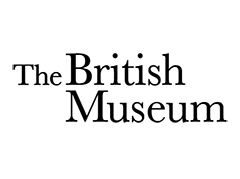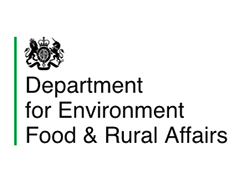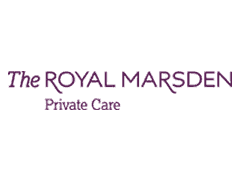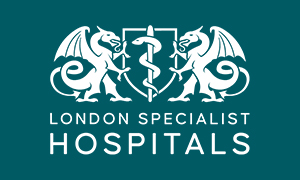
Google’s algorithm is set to update in May to include ‘Page Experience’, ultimately disrupting how pages rank. However, there are some key steps to take before to get your website ready for this.
Everyone wants to be ranking high on Google’s SERP and all marketing professionals will tell you the same thing, that it doesn’t happen overnight. It takes time to improve your ranking through building discovery and relevance, which you can do by creating high-quality and relevant content on the topics you want to be known for. Once achieved, you can begin to determine your authority to Google through relevant sites linking to your content.
- Discovery – Search Engines find your pages and content
- Relevance – Search Engines decide on it’s relevance to the search query
- Authority – Search Engines rank your content based upon your site’s authority.
How will Page Experience Affect Ranking?
The page experience as a principle is simple; for Google, it is about prioritising how useful and friendly the page is for users. Google will rank those friendlier, which is to say more accessible, faster and safer, higher up the SERP.
This change includes pre-existing signals including mobile-friendliness and HTTPS but will also include Google’s Web Vitals, particularly:
- LCP (Loading) – Measures a page’s loading time. A good LCP is within 2.5 Seconds.
- FID (Interactivity) – Measures when page users first interact with a page, i.e., clicks to the time when the browser processes a response. A good FID is typically less than 100 milliseconds.
- CLS (Visual Stability) – Measures the total sum of unexpected layout shifts during the user’s time on the page. A good CLS score is typically less than 0.1.
Top things to do before May
It is undeniable that these changes need to be addressed, so we’ve compiled our top 5 tips for optimising your pages to continue to rank well on Google.
Improve Page Speeds
With the focus for the algorithm looking at ranking pages with better user experience higher, it is important to optimise your pages as the faster the website loads for your users, the better page experience they’re going to have.
When optimising your page speed, you’ll need to be considering both mobile and desktop searches for your users. To discover your existing page speed is, you will need to use services such as Moz, SemRush or Search Console to monitor your existing speed.
Google has in the past listed that two seconds is an acceptable threshold for an eCommerce speed; however, with changes to the algorithm, it is better to be quicker to load than this at roughly 0.5-1 second.
How you can improve your page speed:
- Reduce CSS, HTML, and JavaScript files larger than 150 bytes.
- Optimise your code by removing unnecessary characters, code comments and unused code.
- Reduce the number of page redirects.
- Improve your server response time to under 200ms.
- Optimise your images, so they are no larger than needed.
Optimise content for mobile searches
Mobile searches are undeniably on the rise; in 2020, mobiles generated slightly over half of the global website traffic. Optimising your pages to these will allow you to reduce negative page experiences.
When designing your website and pages, you need to factor in mobile design and how they work differently from desktop sites. As it is a smaller screen, your design and content need to reflect the limited space available.
Mobile optimisation:
- Limit the use of pop-ups; they can be difficult to close and increase bounce rates.
- Resize images to ensure they appear on the screen and reduce load speed.
- Take a mobile-first approach to design.
Differentiate CTAs
Every site has CTAs in some form or another; however, you must optimise these not only to get attraction and the desired result, but they also need to be strategically placed on the screen to make sense and increase relevance.
The cliché less is more is key here; your content needs to progress naturally into a CTA when the user has the right information and not have CTAs the whole way through.
CTA optimisation:
- Short and specific.
- Single commands per CTA to not confuse.
- Need to be well designed and correctly positioned.
Add Image Alt Text
There are two possible types of images on every page, images relevant to the content or stock images to break the page up. When images fail to load, alt text is shown informing the user of the content of the image.
These need to be brief and specific yet ideally contain a keyword as search bots use this for indexing and ranking.
Ensure Security
A considerable part of creating a positive page experience for users is providing the knowledge that they’re using a safe and secure website that protects their information and details they may wish to upload.
If you haven’t already got one, you need to get an SSL certificate as soon as possible to switch your site to HTTPS. Ongoing review of tools such as Google Search Analytics’ security and manual actions will show you a list of your site’s security issues.
These must be addressed as early as possible; Google’s search bots will flag these up as a factor negatively impacting users’ safety and page experience and not rank them highly for it.
It’s never been as important for websites to be ranking well; with businesses relying heavily on them it is vital to implement good SEO practices which are reactive to algorithm changes like page experience.
If you’re concerned about the update and looking for support, get in touch with ExtraDigital for an effective and comprehensive SEO strategy to mitigate the changing algorithm. We’ll conduct a website speed audit to understand your sites current page speeds, and if needed, create a strategy to ensure it stays at a healthy rate.










